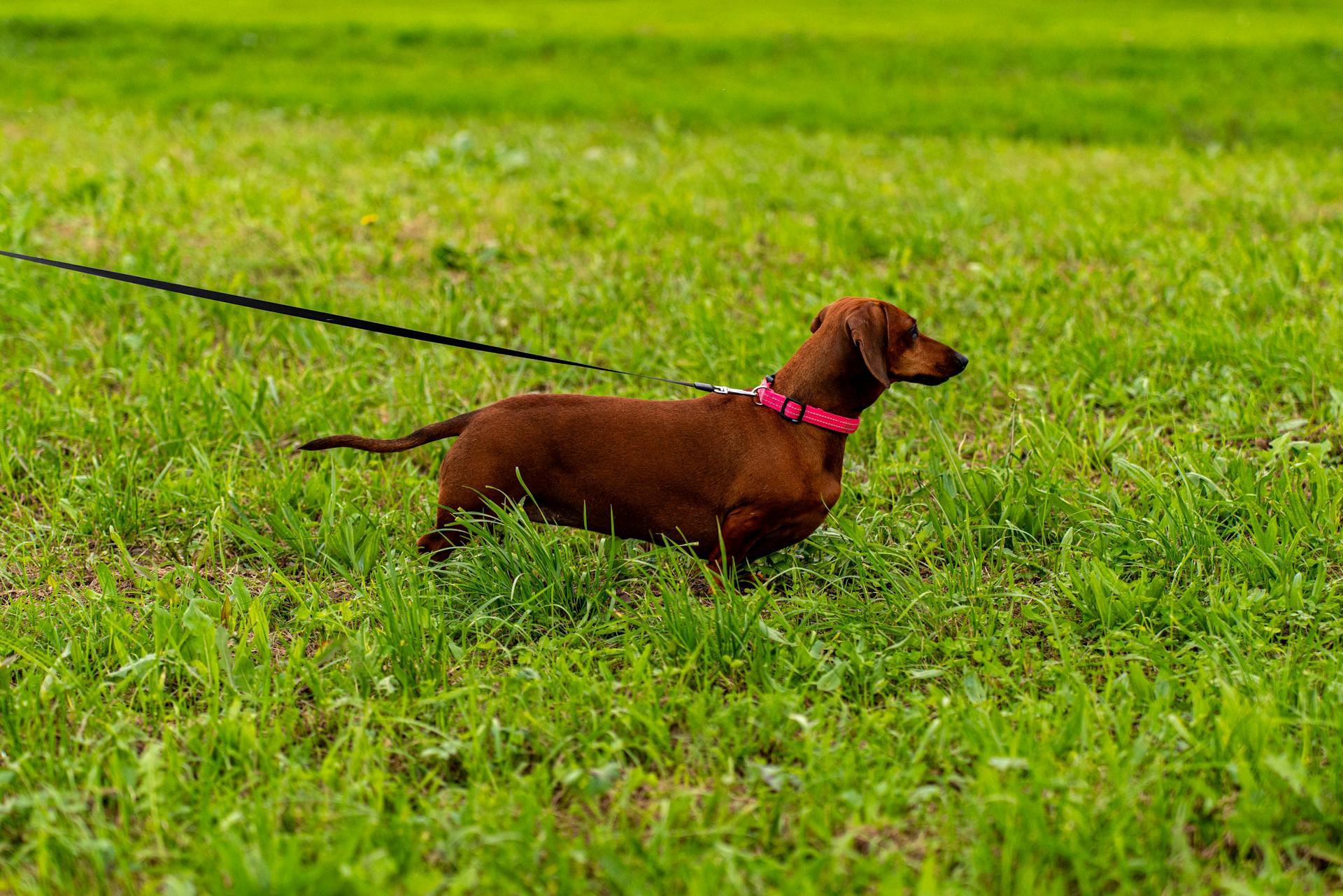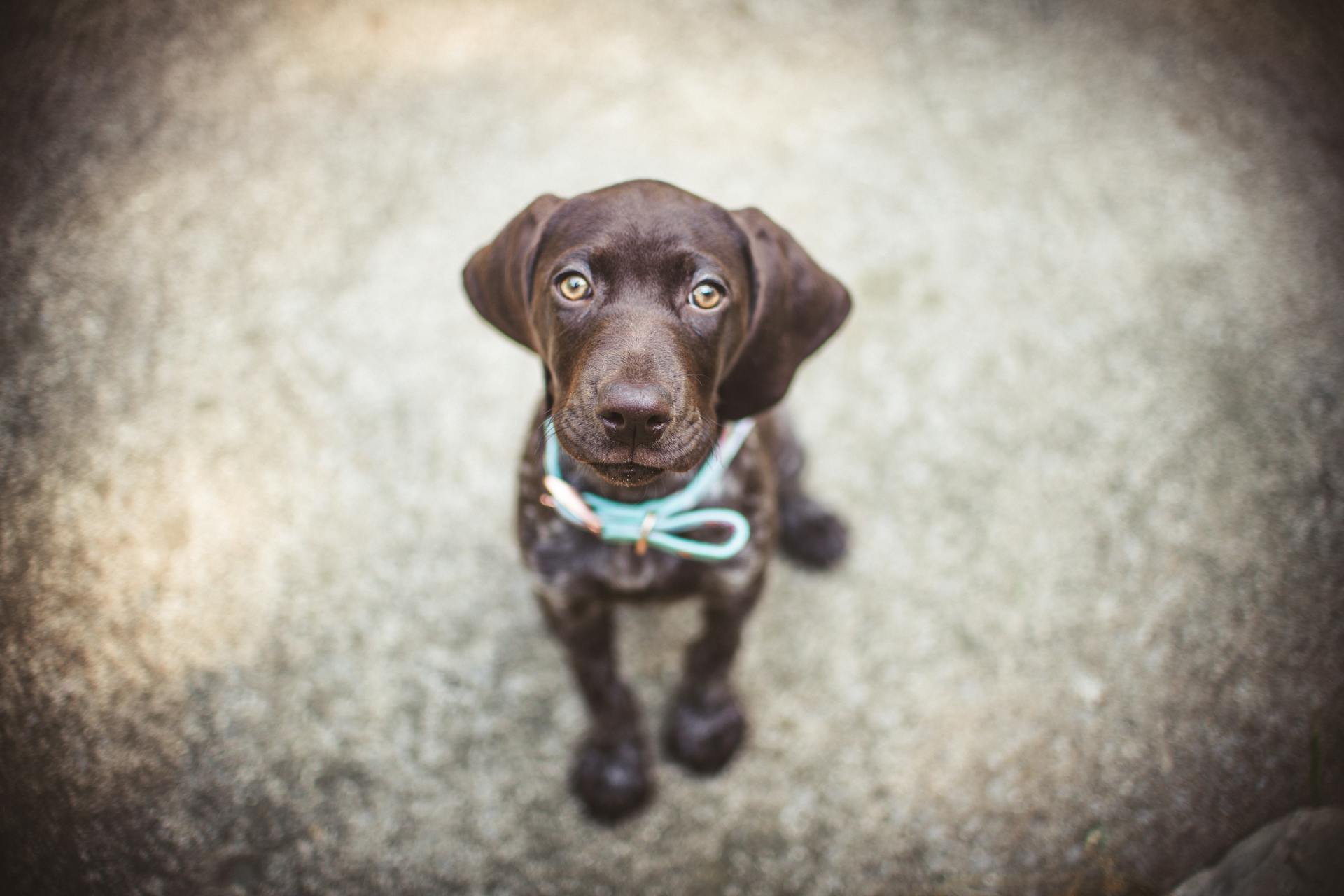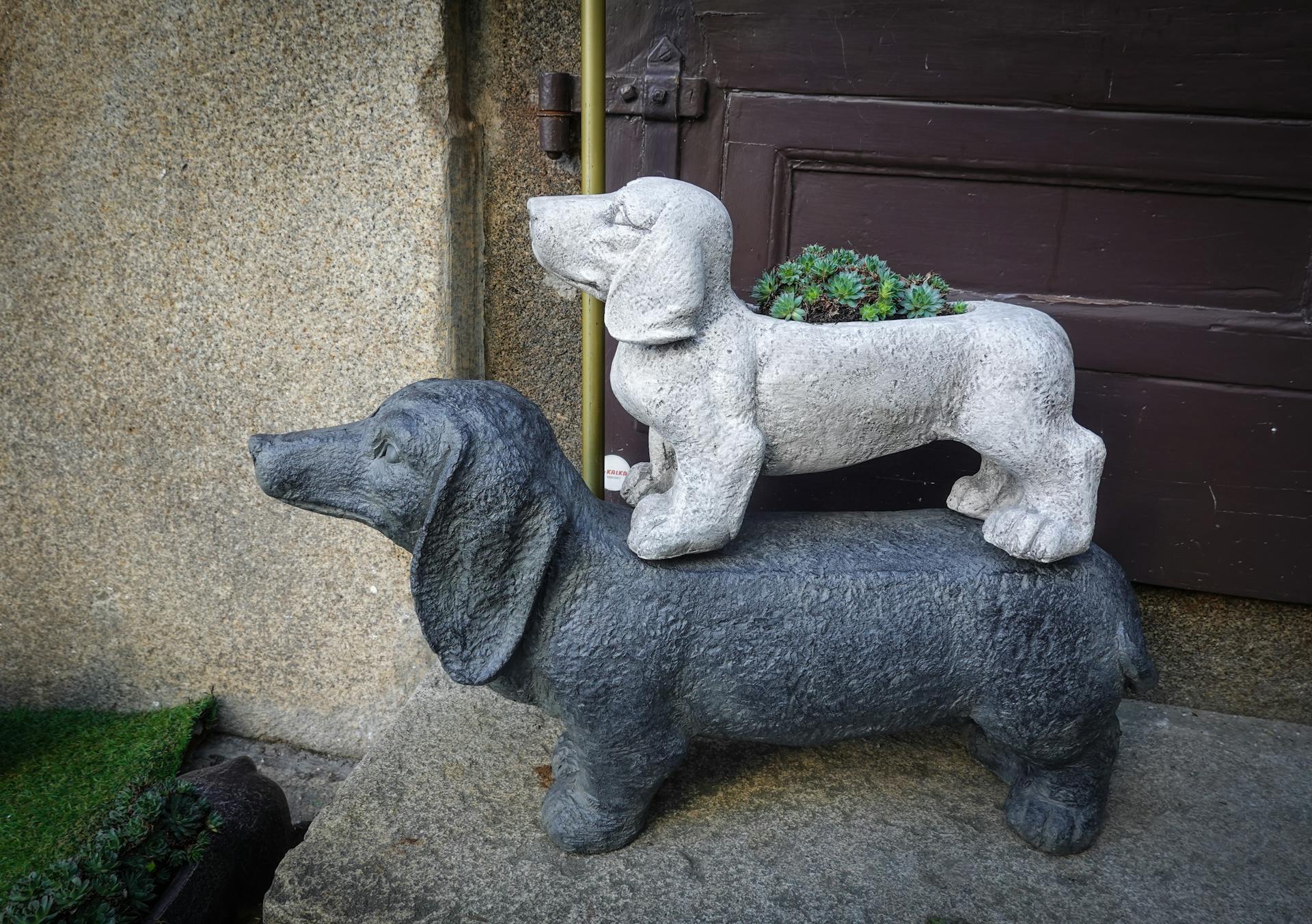
Dachshunds are a breed that originated in Germany, where they were bred to hunt badgers and other burrowing animals. They have a unique body shape that's well-suited for digging, but not exactly for withstanding cold temperatures.
Dachshunds can be sensitive to cold temperatures, especially their long, narrow bodies. In fact, their short legs and long bodies can make them prone to hypothermia if they're exposed to cold weather for too long.
If you're planning to take your dachshund out in the snow, it's essential to dress them up warmly. This includes a coat or sweater, as well as a pair of boots to protect their paws from the cold.
Dachshund Care in Winter
Dachshunds get cold really easily because they are a small dog breed, and their body fat is an insulator that keeps the heat in.
It's too cold for most Dachshunds to be outside for any length of time when the temperature drops below around 5-7 degrees Celsius, or 42-45 degrees Fahrenheit.
Dachshunds can get cold really easily, so you need to look out for the signs to know when it’s time to go back inside. The signs that a Dachshund is too cold are: strong shivering, sleepiness, acting weak, cold fur, decreased heart rate, dilated pupils, pale or blue-colored gums, and breathing issues.
If your Dachshund licks the rock salt or ice melt on the bottom of their feet, it could cause mouth sores and GI issues. If your dog consumes any rock salt or ice melt, take them to the vet ASAP, this is toxic to dogs.
If you do take your Dachshund outside in the snow, protect him from the elements with a coat or fleece and dry him off thoroughly when you come back inside.
Use paw balm to prevent ice balls from forming between your Dachshund’s paw pads. Ice balls can get stuck between your Dachshund’s paw pads and cause them to crack or bleed.
Most Dachshunds should not go out in the snow for more than about 10-15 minutes. Dachshunds are small dogs with thin coats that don’t retain body heat well.
On a similar theme: Weiner Dog Back Brace
Dachshund Coat Types
Long Haired and Wire Haired Dachshunds are prone to getting a wet coat and snow caught in their fur if they spend too much time outside in the snow.
Their coats can be protected with Dachshund specific winter coats and boots to keep the wet and cold out.
Smooth Haired Dachshunds have the shortest fur and are likely to get the coldest out of the three coat varieties.
This is because they can't retain as much body heat as Long Haired and Wire-haired Dachshunds can.
Explore further: Wire Hair Dachshund Puppy
Smooth
Smooth Dachshunds are able to go out in the cold and some even enjoy playing in the snow.
You need to keep an eye on them because Doxies get cold very easily.
It's essential to keep them in a warm room and wrap them up in a blanket once they get back inside to prevent them from getting too cold.
Smooth Haired Dachshunds are likely to get the coldest out of the three coat varieties of Dachshund.
Their short fur doesn't retain as much body heat as Long Haired and Wire-haired Dachshunds can.
However, their short coat would have been helpful in their original role as hunting dogs, keeping them cool while chasing prey.
To help prevent the effects of the cold from bothering them, you can bundle them up in winter clothes when they're outside.
Curious to learn more? Check out: Long Haired Mini Dachshund Full Grown
Hair Types
Long Haired Dachshunds have beautiful, flowing coats that require extra attention in cold weather. If their coat gets wet and snowy, it can be a real pain to brush out.
Wire Haired Dachshunds have coarser fur with a fluffy under layer, but it's still finely textured and designed for protection, not warmth.
For more insights, see: How Big Do Long Haired Chihuahuas Get
Winter Coats: Beyond Fashion
Long haired and wire haired Dachshunds need to keep their coats dry and free of snow, as wet fur can reduce their natural insulation and make them colder.
Dachshunds are prone to getting wet coats and snow caught in their hair, especially if they spend too much time outside in the snow.
Waterproof winter jackets and coats for dogs serve a practical purpose by keeping your Dachshund's fur dry during both prolonged walks and quick bathroom trips.
Wet fur can reduce the natural insulating qualities it offers, making it even more crucial to ensure they stay dry, especially in harsh winter climates.
Dachshunds come in various shapes and sizes, so finding a snug fit is crucial when shopping for winter coats.
Opt for jackets like the one with an integrated harness, which provides dual functionality, and invest in coats that are thick, durable, snowproof, and long-lasting.
A waterproof dog winter jacket with a harness is a great option, as it's waterproof and has snuggly warm cotton on the inside, making it perfect for cold winter days.
Here's an interesting read: Do Dogs Drink Less Water in Winter
Dachshund Health in Winter
Dachshunds are susceptible to hypothermia, which occurs when their body loses heat faster than it can produce, causing a severely low body temperature due to cold exposure.
Related reading: Pitbull Dog Body
Strong shivering, sleepiness, and acting weak are all symptoms of hypothermia in Dachshunds. They may also have cold fur, a decreased heart rate, dilated pupils, pale or blue-colored gums, and breathing issues.
Frostbite is a concern for Dachshunds, especially in their paws, legs, and ears, which can freeze due to cold exposure.
Dachshunds' paws are particularly vulnerable to ice melt chemicals like rock salt, which can cause cracking, dryness, and chemical burns if not cleaned off or protected properly.
If your Dachshund licks rock salt or ice melt on their paws, it can lead to mouth sores and GI issues, and consuming it is toxic to dogs.
Readers also liked: Doberman Pinscher Paws
Winter Hazards
Winter can be a challenging time for Dachshunds, and as a pet owner, it's essential to be aware of the potential hazards they may face. Hypothermia is a serious issue that can occur when your dog's body loses heat faster than it can produce, causing symptoms like strong shivering, sleepiness, and cold fur.
Your Dachshund's paws, legs, and ears are the most vulnerable body parts for frostbite, which occurs when the tissue below the skin freezes.
Rock salt and ice melt on sidewalks and driveways can cause nasty cracking, dryness, and chemical burns on your pup's paws if not cleaned off or protected properly. If your Dachshund licks the rock salt or ice melt on the bottom of their feet, it could lead to mouth sores and GI issues. If you suspect your dog has ingested rock salt or ice melt, take them to the vet ASAP, as it is toxic to dogs.
Shivering and Shaking
If your Dachshund is cold, one of the earliest warning signs is shivering or shaking. He might start shaking and trembling in the cold.
Like all dogs, Dachshunds shiver in cold temperatures to try and keep their body temperature up.
Check this out: Why Is My Maltipoo Shaking
Winter Clothing for Dachshunds
Dachshunds need extra protection against the cold due to their close-to-the-ground stature.
While all dogs can benefit from winter wear, it's essential to understand the functionality and purpose behind winter attire for your Dachshund.
Waterproof winter jackets and coats for dogs serve a practical purpose by keeping your Dachshund's fur dry during both prolonged walks and quick bathroom trips.
Wet fur can reduce the natural insulating qualities it offers, making it even more crucial to ensure they stay dry.
General Tips
Dachshunds get cold really easily, so it's best to take some precautions to protect them on a cold day. They have a short, compact body that doesn't allow them to generate much body heat.
Dachshunds have a thick coat, but it's not enough to keep them warm in freezing temperatures. They can get hypothermia quickly if left outside for too long.
Keep an eye on your dachshund's body language, if they start shivering or acting lethargic, it's a sign that they're too cold. This can happen even if the temperature isn't extremely low.
Dachshunds can get cold really easily, so it's best to take some precautions to protect them on a cold day.
A unique perspective: Why Do Yorkshire Terriers Lick so Much
Sources
- https://celebritydachshund.com/blogs/crusoe/wiener-dogs-can-enjoy-winter
- https://dachshundluke.wordpress.com/2010/01/11/i-thought-dachshunds-love-snow/
- https://www.dachshundstation.com/protect-dachshund-cold-weather/
- https://dacheverywhere.com/blogs/dachshund/are-your-dachshunds-ready-and-warm-for-the-winter
- https://www.ilovedachshunds.com/do-dachshunds-get-cold-easily/
Featured Images: pexels.com


